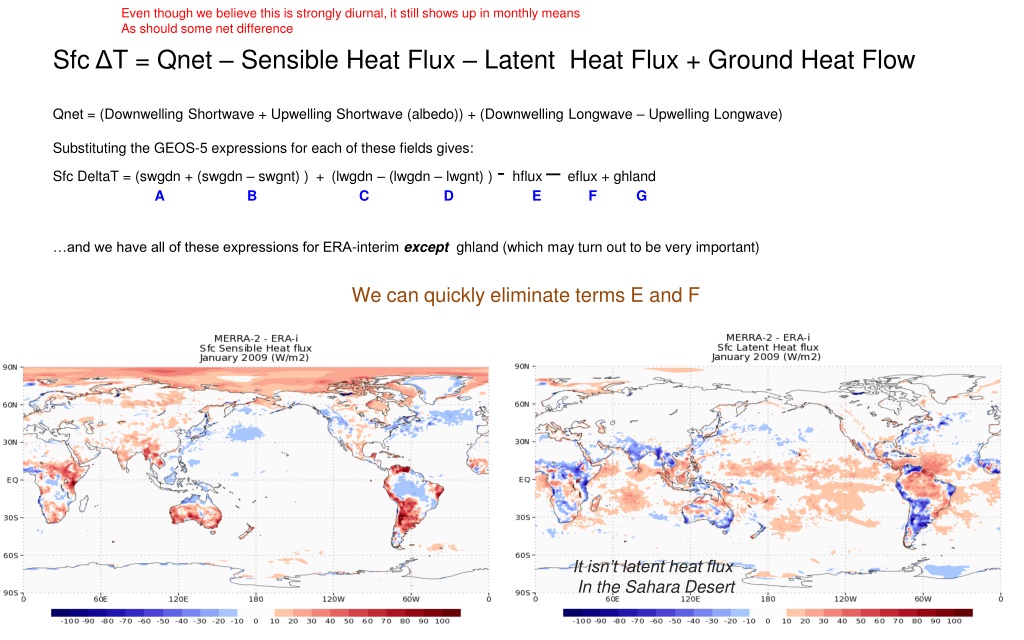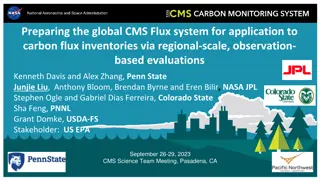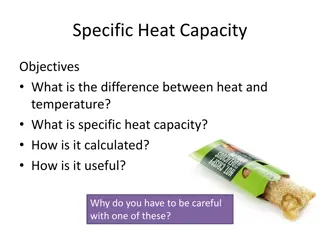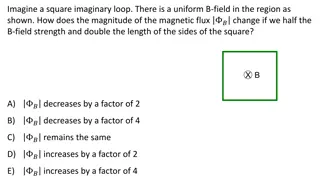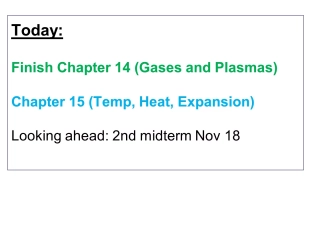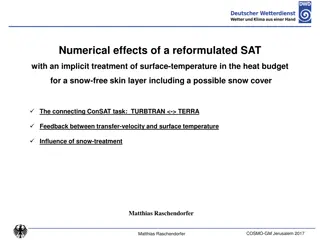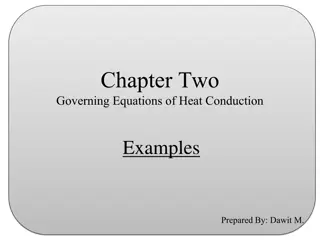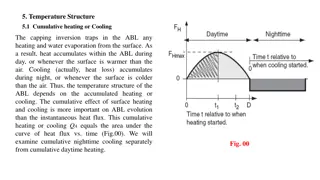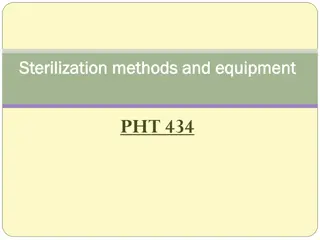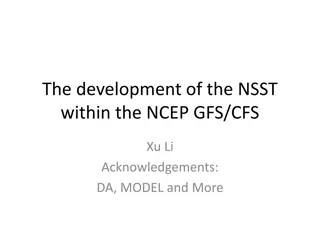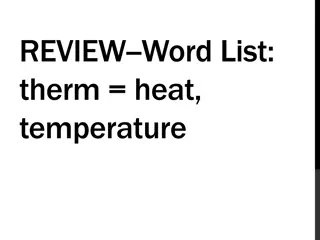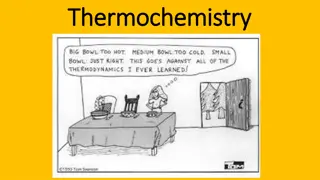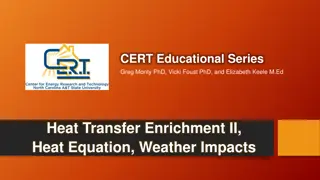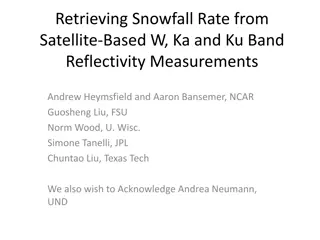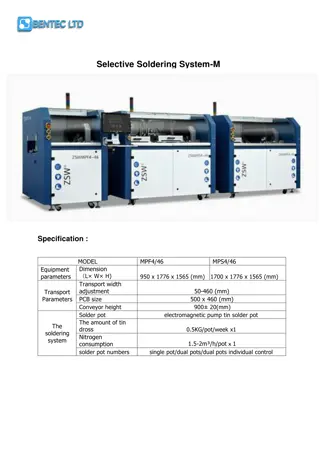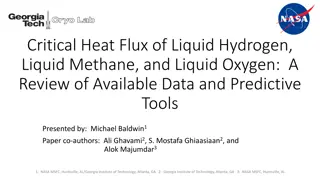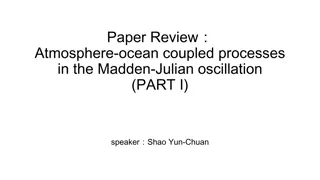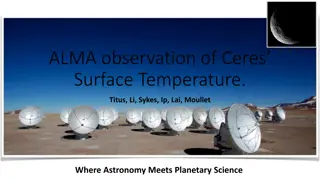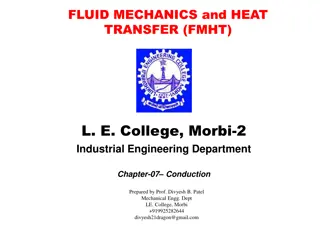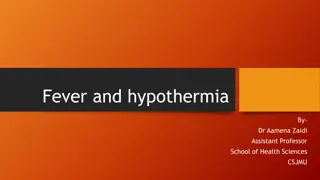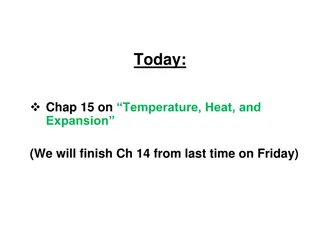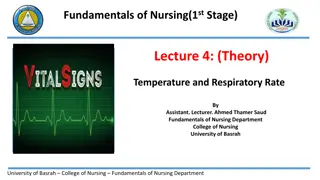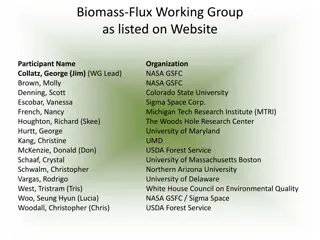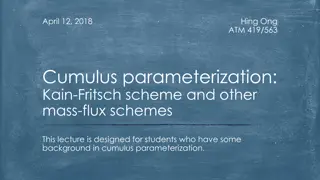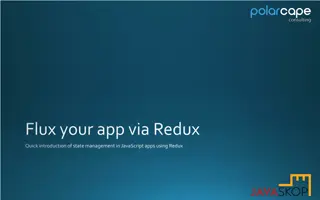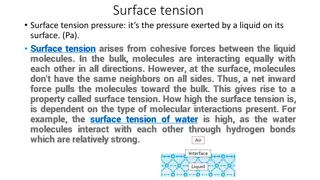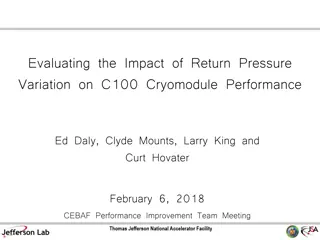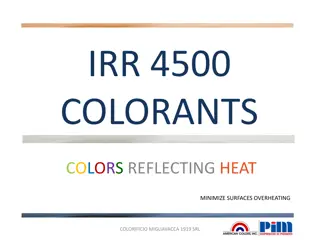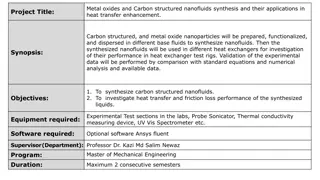Analysis of Surface Temperature and Heat Flux Relationships
Exploring the interplay between surface temperature, sensible heat flux, latent heat flux, and ground heat flow, utilizing data from GEOS-5 and ERA-interim models to understand the impact of different heat flux components on surface temperature variations in diurnal cycles and monthly means. Comparison with MERRA-2 reveals potential biases and challenges, particularly in the context of desert regions.
Download Presentation

Please find below an Image/Link to download the presentation.
The content on the website is provided AS IS for your information and personal use only. It may not be sold, licensed, or shared on other websites without obtaining consent from the author. Download presentation by click this link. If you encounter any issues during the download, it is possible that the publisher has removed the file from their server.
E N D
Presentation Transcript
Even though we believe this is strongly diurnal, it still shows up in monthly means As should some net difference Sfc T = Qnet Sensible Heat Flux Latent Heat Flux + Ground Heat Flow Qnet = (Downwelling Shortwave + Upwelling Shortwave (albedo)) + (Downwelling Longwave Upwelling Longwave) Substituting the GEOS-5 expressions for each of these fields gives: Sfc DeltaT = (swgdn + (swgdn swgnt) )+(lwgdn (lwgdn lwgnt) ) - hflux eflux + ghland A B C D E F G and we have all of these expressions for ERA-interim except ghland (which may turn out to be very important) We can quickly eliminate terms E and F It isn t latent heat flux In the Sahara Desert
Sfc Delta-T = Qnet Sensible Heat Flux Latent Heat Flux + Ground Heat Flow Qnet = (Downwelling Shortwave + Upwelling Shortwave (albedo)) + (Downwelling Longwave Upwelling Longwave) Substituting the GEOS-5 expressions for each of these fields gives: Sfc DeltaT = (swgdn + (swgdn swgnt) )+(lwgdn (lwgdn lwgnt) ) + ghland A B C D G and we have all of these expressions for ERA-interim except ghland (which may turn out to be very important) We can quickly eliminate terms E and F
Sfc T = Qnet Sensible Heat Flux Latent Heat Flux + Ground Heat Flow Qnet = (Downwelling Shortwave + Upwelling Shortwave (albedo)) + (Downwelling Longwave Upwelling Longwave) Substituting the GEOS-5 expressions for each of these fields gives: Sfc T = (swgdn + (swgdn swgnt) )+(lwgdn) + ghland A B C G and we have all of these expressions for ERA-interim except ghland (which may turn out to be very important) Term D, upwelling longwave, by definition has To be lower in MERRA-2, it says that we have A cold bias so it isn t contributing to the bias
Sfc T = Qnet Sensible Heat Flux Latent Heat Flux + Ground Heat Flow Qnet = (Downwelling Shortwave + Upwelling Shortwave (albedo)) + (Downwelling Longwave Upwelling Longwave) Substituting the GEOS-5 expressions for each of these fields gives: Sfc T = (swgdn swgnt) )+(lwgdn) + ghland B C G and we have all of these expressions for ERA-interim except ghland (which may turn out to be very important) Downwelling Shortwave, A, could be an issue in cloudy regions but It looks pretty good compared with ERA-interim in the desert.
Sfc T = Qnet Sensible Heat Flux Latent Heat Flux + Ground Heat Flow Qnet = (Downwelling Shortwave + Upwelling Shortwave (albedo)) + (Downwelling Longwave Upwelling Longwave) Substituting the GEOS-5 expressions for each of these fields gives: Sfc T = (swgdn swgnt) )+(lwgdn) + ghland B C G and we have all of these expressions for ERA-interim except ghland (which may turn out to be very important) Upwelling shortwave , B the albedo factor may be contributing to the cold bias in some small way (slightly brighter, slightly less sfc. net)
Sfc T = Qnet Sensible Heat Flux Latent Heat Flux + Ground Heat Flow Qnet = (Downwelling Shortwave + Upwelling Shortwave (albedo)) + (Downwelling Longwave Upwelling Longwave) Substituting the GEOS-5 expressions for each of these fields gives: Sfc T = (swgdn swgnt) )+(lwgdn) + ghland B C G and we have all of these expressions for ERA-interim except ghland (which may turn out to be very important) The Downwelling longwave term could be important. If we have clouds and aerosols Radiating at the appropriate temperature, it should be close to ERA-i. And while not Exactly like ERA-i , the mean difference is only on order of 10 to maybe 15 W/m2 not enough to be the 2-3K differences we see While we see a lot Of blue over the desert It is in the 10W/m2 range
It turns out the ground heat flow term has a large diurnal cycle in deserts The equation describing the conduction of heat through the ground G = Ks * T / depth, where Ks is the thermal conductivity (dependent on ground type soil, clay, sand)
